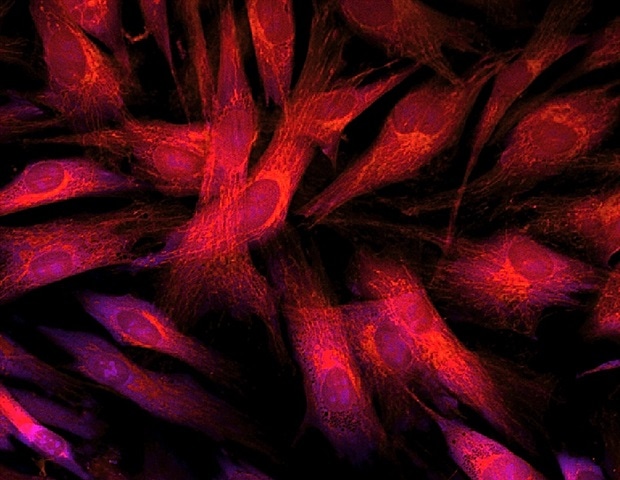In a recent study published in The New England Journal of Medicine, researchers performed a large-scale sequencing study using data gathered over a decade from a previous study, the Deciphering Developmental Disorders (DDD) study.
This was undertaken to describe analytic strategies developed in the DDD study to identify and classify thousands of new molecular diagnoses and report the factors affecting the probability of receiving a rare disease diagnosis.
 Study: Genomic Diagnosis of Rare Pediatric Disease in the United Kingdom and Ireland. Image Credit: tilialucida/Shutterstock.com
Study: Genomic Diagnosis of Rare Pediatric Disease in the United Kingdom and Ireland. Image Credit: tilialucida/Shutterstock.com
Background
The DDD study was among the pioneering works in the United Kingdom (UK) and Ireland to combine large-scale genomic research with individual patient feedback.
It generated extensive exome sequencing and microarray data, further enriched by clinical phenotype data, documented by >200 UK and Irish clinicians during the same duration. The hybrid clinical–research approach employed in this study has now become standard practice in genomic medicine.
The DDD study made thousands of new diagnoses, identified ~60 new developmental disorders, and enabled more than 350 genotype- or phenotype-specific projects. Another main component in the DDD study was a live online platform, DECIPHER, that enabled the reevaluation of reported genomic variants with current data, facilitating new opportunities for new molecular diagnosis.
Overall, this study showed the significance of nationwide recruitment, systematic phenotyping, individual feedback, variant interpretation, and data sharing.
Molecular diagnosis of pediatric diseases has apparent benefits; for instance, it raises the possibility of their treatment during the early years of life with profound lifelong benefits.
Thus, next-generation genomewide sequencing technologies could greatly benefit the domain of pediatrics, where the genetic architecture of most disorders is heterogeneous and encompasses many highly penetrant, pathogenic de novo genetic variants.
Moreover, the number of partial diagnoses suggests that multiple factors contribute to the diagnosis, including environmental factors, thus, hindering diagnosis and large-scale gene–disease discovery in many probands with common incompletely penetrant genetic variants.
About the study
The present study investigated novel genetic causes for rare, difficult-to-diagnose developmental (or monogenic) pediatric disorders.
To this end, they first described analytic strategies developed in the DDD study, which could help identify and categorize new molecular diagnoses. Next, they documented factors that could affect the likelihood of receiving a diagnosis for a rare pediatric disease.
They set up a multicenter research collaboration across 24 regional genetics services spanning the UK and Ireland and created a management committee comprising scientists, a bioethicist, and clinicians. In addition, they employed a social scientist to perform ethics research.
A team of consultant clinical geneticists, research nurses, and genetic counselors recruited over 13,500 families with 13,610 probands, 88% of whom belonged to one family, i.e., parent–offspring trios, between April 2011 and April 2015.
The eligibility criteria for participation in this study were having neurodevelopmental disorders or birth anomalies, including aberrant growth measurements, dysmorphic features, atypical behavioral phenotypes, and genetic disorders. These conditions had enormous effects, but their molecular basis was unclear.
The team performed three independent genomic assays using deoxyribonucleic acid (DNA) from probands, as follows:
- exome sequencing
- exon-focused array comparative genomic hybridization (aCGH); and
- single-nucleotide polymorphism (SNP) genotyping
Results
The study analysis covered a set of 13,449 probands. On average, the researchers noted 1.0 and 2.5 candidate variants for every parent-offspring trio and singleton proband, respectively.
Clinical and computational approaches toward variant classification helped make a diagnosis in ~41% (5,502 of 13,449) of probands, and strikingly, 76% of them had a highly penetrant pathogenic de novo variant.
The other 22% (2,997 of 13,449) of probands had genetic variants of uncertain significance robustly associated with monogenic developmental disorders in children. Intriguingly, the parent–offspring trio recruitment had the largest effect on the probability of a diagnosis, with an odds ratio (OR) of 4.70 and a 95% confidence interval [CI].
Per multivariable logistic regression model predictions, compared to probands in the bottom decile, those in the top decile showed a higher diagnostic yield (52% vs. 16%). However, these predictions did not account for cohort-specific factors. For instance, probands with African ancestry showed a reduced probability of receiving a diagnosis, OR=0.51.
Likewise, in-utero contact with antiepileptic medicines and premature birth between 22 to 27 weeks of gestation reduced the likelihood of a diagnosis, with respective ORs of 0.44 and 0.39.
Overall, the authors found 4425 concordant variants between clinical and predicted classifications of variant pathogenicity, suggesting this hybrid approach had a high sensitivity of 99.5% and a specificity of 85%.
Conclusions
The current study highlighted that the failure rate of standard, phenotype-driven diagnostic approaches is high and diagnostic yield is low, especially for families whose parental genotype data and ancestry-matched controls are missing, e.g., probands of African ancestry.
Thus, it is imperative to increase the participation of underrepresented groups in research to increase the current diagnostic yield of ~41%.
In the future, the emphasis should be on enhancing this project by capturing longitudinal phenotype data and assessing environmental factors contributing to developmental disorders.
Nonetheless, this study remarkably showed how clinicians, genomic scientists, and bioinformaticians could together drive molecular diagnosis of developmental disorders.

 PARENTING TIPS
PARENTING TIPS







 PREGNANCY
PREGNANCY








 BABY CARE
BABY CARE








 TODDLERS
TODDLERS








 TEENS
TEENS








 HEALTH CARE
HEALTH CARE







 ACTIVITIES & CRAFTS
ACTIVITIES & CRAFTS








 CONTACT
CONTACT ABOUT
ABOUT


